In this article, educational psychologist Karina Alejandra García explains what cognitive impairment is, and how to prevent and treat it.
This alteration of cognitive health can affect our daily performance. Mental exercises and learning new skills can act as brain protectors.
What are cognitive functions and cognitive disorders?
The cognitive functions are the processes by which we interpret the information we receive from the environment through our senses, together with our knowledge and experiences. They make up different cognitive domains responsible for analyzing specific information, such as attention, memory, language, executive functions, praxis or social cognition, among others, which allow us to reason, speak, write, dream, relate, and everything we can do, think and feel, resulting in our behavior. This is the subject of study of cognitive neuropsychology (Goldstein and McNeil, 2004).
The term ‘cognitive disorder’ refers to negative changes in a person’s cognitive performance in relation to what is expected for their age and educational level, which hinder the proper functioning of one or more cognitive domains. This may be due to sleep disturbances, poor nutrition, chronic stress or specific illnesses such as depression or Alzheimer’s disease.
These changes must be significant and not transient, that is, the person’s previous performance was better and they now find it difficult to carry out everyday activities or require supports to carry them out, such as a planner or alarm; and this alteration must be maintained over a period of time or, even, the condition can become more complex. Cognitive changes produce functional, emotional and behavioral changes that can cause problems in the academic trajectory, social relationships and in the work sphere of the person who suffers from them.
Clinical criteria for mild cognitive impairment
The memory complaint present in adults who did not meet the criteria for neurological disease motivated research into the clinical state that occurs between normal aging and the most advanced degree of cognitive impairment known as dementias (Petersen, 2004). These studies, in addition to giving clinical entity to mild cognitive impairment as an initial stage of cognitive decline, have allowed early diagnosis of neurodegenerative diseases and their specific treatment.
The DSM-5 (Manual of classification of mental disorders) establishes a new name for this clinical entity as a result of the evolution in diagnostic criteria, identifying it as mild neurocognitive disorder (mild NCD). This allows an improvement in clinical practice and encourages the study of new non-pharmacological interventions.
In the DSM-5 mild NCD is differentiated from major NCD. Both are characterized by acquired cognitive decline in one or more cognitive domains, found in the person’s own complaint, in that of a reliable informant and in the result of the neuropsychological evaluation, as well as in the individual’s level of autonomy in daily functioning. In major NCD, the person presents severe dysfunction that affects autonomy, progressively increasing dependence on others for activities that they previously could perform independently. In cases of mild NCD, the person retains autonomy, presents subtle failures in their performance and may require more effort and time to carry them out.
It is estimated that the prevalence of mild cognitive impairment (mild NCD) among older individuals ranges from 2 to 10% at age 65, and from 5 to 25% at age 85; while the prevalence of dementia (major NCD) is approximately 1–2% at age 65 and up to 30% at age 85 (DSM-5, 2014).
Neuropsychological assessment as an effective study for specific diagnosis
An accurate diagnosis that can differentiate between age-appropriate changes, mild cognitive impairment and major cognitive impairment requires a detailed anamnesis, observation and medical examination, neuroimaging studies and neuropsychological assessment.
Neuropsychological assessment is a complementary, non-invasive, outpatient brain examination carried out by a specialist neuropsychologist. It consists of a personal anamnesis, administration of specific tests, and observation of behavior. It allows analysis of cognitive performance to identify preserved abilities and those that present challenges in learning and in solving everyday activities (functional, academic, social, relational) (Wilson, 2017). Among the general objectives of this assessment are contributing to diagnosis, planning treatments tailored to each person’s needs, assessing the effects of treatments, identifying or ruling out the presence of sequelae after a surgical intervention, objectifying changes over time, showing the supports required, informing and advising family members and caregivers about the situation, and jointly planning anticipatory strategies (Burin, Drake, Harris, 2007).

Subscribe
to our
Newsletter
Neuropsychological rehabilitation as a non-pharmacological treatment
Neuropsychological rehabilitation is a non-pharmacological intervention whose objective is to achieve a good quality of life for people with developmental problems, learning difficulties or acquired brain injury, among other pathologies. The brain has a natural capacity for restructuring and reorganizing its functioning as a recovery process. After brain injury cognitive and behavioral recovery can be achieved spontaneously also through reorganization of intact neural circuits (Luria, 1963), but it is always better to support this with a planned and appropriate intervention.
This intervention acts like a kind of rehearsal that activates the neural networks involved in basic and complex mental processes and the motor aspects of cognitive, functional and behavioral performance; it allows training and strengthening their functioning, achieving long-term improvements in many cases.
Neuropsychological rehabilitation includes cognitive rehabilitation, behavior modification, intervention with the family or caregivers, and occupational and vocational readaptation. The general objective of neuropsychological rehabilitation is to bring the necessary resources closer to people who have suffered brain injury and to their families so that they can reduce cognitive and behavioral alterations, manage these difficulties and reduce their impact on daily life. This implies teamwork between patients, family members and therapists (Elena Muñoz Marrón, 2009).
Rehabilitation must have a clear purpose before starting. This presupposes the concepts of generalization and ecological validity, since the greatest challenge is achieving that the improvements obtained in treatment generalize to everyday life. This means that they can be applied equally to daily tasks, optimizing performance. To achieve this it is necessary to select common objectives and achievable goals together with the patient and their family, to know in advance the purpose of the rehabilitation and what is intended to be achieved. Once those objectives and goals are established, the necessary means will be sought and actions taken accordingly to achieve them.
In the case of mild cognitive impairment (mild NCD), early neuropsychological rehabilitation seeks to improve cognitive performance or slow its progression to dementia (major NCD). Stimulation of cognitive functions is achieved through the practice of cognitive exercises adapted to each case (Demey & Allegri, 2010).
Cognitive stimulation as a preventive, individual and group resource
The increase in life expectancy brings with it an increase in neurodegenerative diseases and other chronic illnesses that can interfere with the conditions of aging. For this reason it is essential to intervene in the promotion and prevention of young people and adults so that they are aware of healthy habits.
Brain health is defined as the state of brain functioning that allows people to develop their full potential throughout life, regardless of the presence or absence of disease. It can be understood as a capacity that can be trained and used in favor of quality of life.
Knowing the determinants of health in general and brain health in particular, and communicating them to society, can improve mental and physical health and reduce the prevalence of neurological disorders, which will generate a positive social and economic impact (WHO, 2022). The most recognized determinants of health are physical activity, nutrition, cognitive activity, rest, social activity, sensory capacity, mood and environmental conditions, among others.
Cognitive stimulation is a preventive activity available to everyone and can be carried out at low cost. In contrast, neuropsychological rehabilitation involves intervention by specialist professionals. In both cases, individual or group intervention formats can be proposed, taking into account that, in principle, the modality will depend on the patient’s cognitive state. Generally, individual intervention is reserved for people with mild or major cognitive impairment who respond favorably to direct contact with the professional in charge, and it can be face-to-face or in virtual environments.
The possibility of remote stimulation or rehabilitation will be indicated only for those people with good computer skills or who can use it efficiently with minimal support and in a full state of consciousness. Nevertheless, it is recommended to accompany it with face-to-face meetings, since professional observation is irreplaceable. Group settings provide the benefit of a social network, of exchange with peers, where the strategies incorporated in individual sessions are put into play.
Contributions of technology to prevention and cognitive rehabilitation
Technology brings novelty and surprise that activate the brain’s reward system, producing pleasurable sensations and therefore motivating continuation with those stimuli, allowing learning from the experience; and it has been shown that such learning is stored more strongly (Ballarini, 2015). Therefore, it becomes a great ally to engage people in stimulation, whether for preventive stimulation or neuropsychological rehabilitation.
The use of technology can range from electronic planners, reminder apps, digital brain games or rehabilitation-specific software. Incorporating it into neuropsychological rehabilitation implies designing specific applications that respect the principles of neuropsychological rehabilitation. It is not just any activity inserted into a program, but activities planned by expert professionals who are prepared for it, who carefully choose the stimuli to be used, the task timings, the objectives, the sequence of steps to achieve the goal, etc. The greatest contribution is in terms of accessibility, since they allow adapting tasks to each person’s capabilities, from a recreational brain game to a voice simulator.
What to do if you experience symptoms?
The recommendation for people who present symptoms, such as difficulty concentrating, continually forgetting recent information, not finding the right words, taking too long to carry out an action, feeling overwhelmed by occupational activity or experiencing changes in mood, is to seek medical consultation to determine the significance of those symptoms and indicate the most effective treatments. The doctor should provide adequate information and the consulting individuals should have all their doubts cleared in order to achieve good adaptation to these interventions and to begin the treatment plan immediately.
What to do to prevent mild cognitive impairment?
Everyone benefits from incorporating into their routine activities that represent a cognitive challenge, that involve some complexity of resolution, and that differ from the occupational activities they perform daily… The more novel the stimulus, the stronger the impact will be. These can include: singing in a choir, running in a group, practicing ballroom dancing, playing board games, using cognitive training apps, etc.
Having original experiences to create unforgettable memories is a great idea that includes incorporating novelty to reinvent oneself. It is about having short experiences not yet tried, such as participating in a retreat, taking a class in a sport, skydiving, going to a blind restaurant, learning professional makeup, taking a professional sushi course, going glamping or attending a ceramics class, among others.
The challenge is personal and is defined based on each person’s interests. A simple and accessible version is using gatherings among friends or family, where one of the participants is tasked with teaching a skill they know perfectly, such as playing an instrument, cooking a special dish, dabbling in mixology or a visual art technique. This will also strengthen affective bonds that are so important for overall well-being and mental health.
Conclusion
Mild cognitive impairment is characterized by a minimal loss of cognitive functions such as memory, which can be identified in young adults, and whose progression can be halted through early diagnosis and specific treatment. Treatment enables the person to continue developing in educational, social and work settings.
Bibliography
- Ballarini, F. (2015). REC: Por qué recordamos lo que recordamos y olvidamos lo que olvidamos. Sudamericana.
- Demey, I., & Allegri, R. F. (2010). Intervenciones terapéuticas cognitivas en el deterioro cognitivo leve. VERTEX REVISTA ARGENTINA DE PSIQUIATRÍA, XXI, 253–259.
- De la Cuerda, R. C. (2018). Nuevas tecnologías en Neurorrehabilitación. Medica panamericana.
- Fleming, J.M., & Schmidt, J. (2015). Metacognitive Occupation-Based Training in Traumatic Brain Injury.
- Goldstein, L. H., & McNeil, J. E. (Eds.). (2013). Clinical neuropsychology: A practical guide to assessment and management for clinicians (2nd ed.). Wiley-Blackwell.
- Lezak, M. et. al. (2004). Neuropsychological Assessment. Nueva York: Oxford University Press. McKhann G, Drachman D, Folstein M, y col. (1984) Clinical diagnosis of Alzheimer’s disease: report of the NINCDS-ADRDA work group under the auspices of the Department of Health and Human Services Task Force on Alzheimer’s disease. Neurology, 34: 939-944.
- Luria, A. R. (1963). Restoration of function after brain injury. Macmillan.
- Marrón, E. M., Alisente, J. L. B., Izaguirre, N. G., & Rodríguez, B. G. (2009). Estimulación cognitiva y rehabilitación neuropsicológica. Editorial Uoc.
- Petersen, R. C. (2004). Mild cognitive impairment as a diagnostic entity. J Intern Med, 256(3), 183–194.
- Sánchez Rodríguez, M. T., Collado Vázquez, S., Martín Casas, P., & Cano de la Cuerda, R. (2018). Apps en neurorrehabilitación. Una revisión sistemática de aplicaciones móviles. Neurologia (Barcelona, Spain), 33(5), 313–326. https://doi.org/10.1016/j.nrl.2015.10.005
- Vidal, J. (2019). Nuevas tecnologías en Neurorrehabilitación. Rehabilitación (Madrid. Internet), 53(2), 141. https://doi.org/10.1016/j.rh.2019.02.001
- Wilson, B. (2017). Neuropsychological Rehabilitation: The International Handbook (B. A. Wilson, J. Winegardner, C. M. van Heugten, & T. Ownsworth, Eds.). Routledge.
- World Health Organization. (2022). Optimizing brain health across the life course: WHO position paper. World Health Organization.
If you liked this article about neuropsychological rehabilitation in mild cognitive impairment, you will likely be interested in these NeuronUP articles:
“This article has been translated. Link to the original article in Spanish:”
La rehabilitación neuropsicológica en el deterioro cognitivo leve
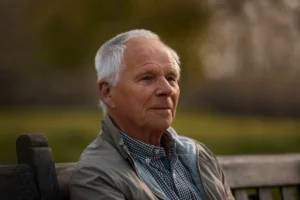

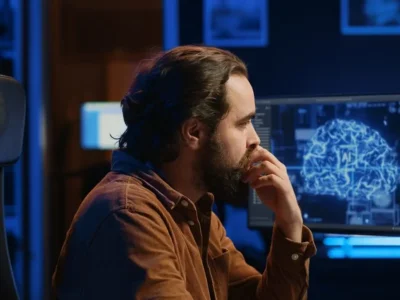
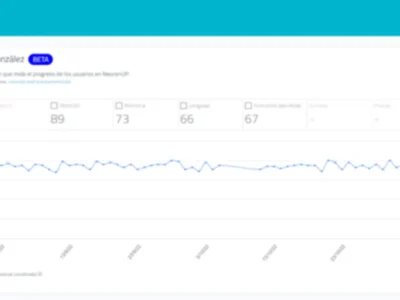
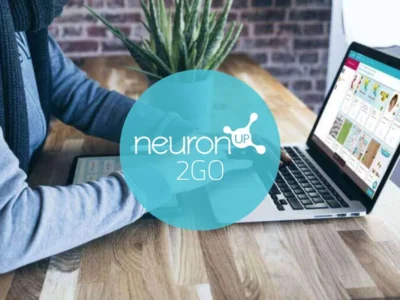
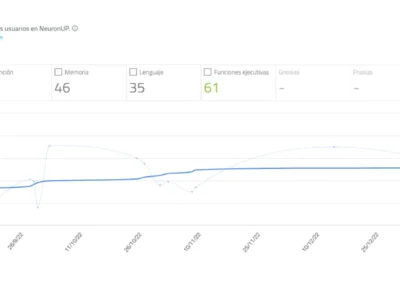
 The importance of neurological physiotherapy in patients with stroke
The importance of neurological physiotherapy in patients with stroke
Leave a Reply